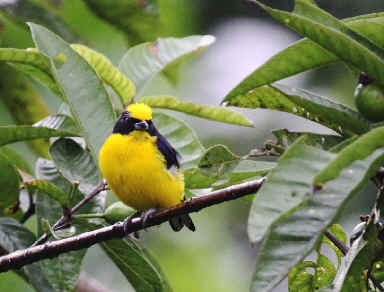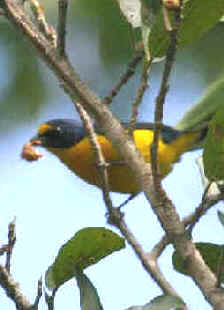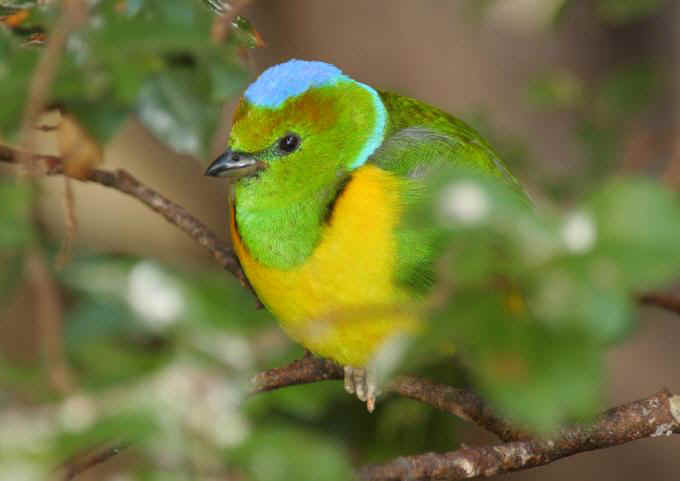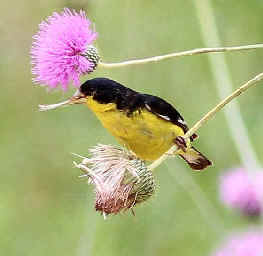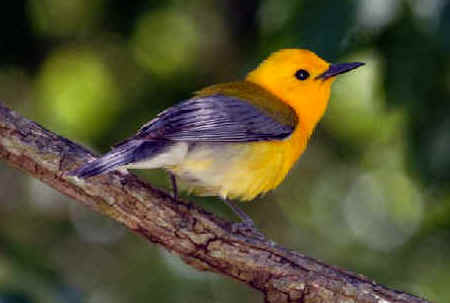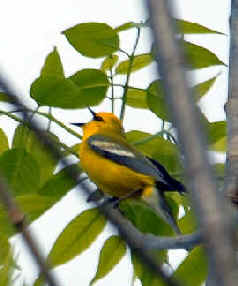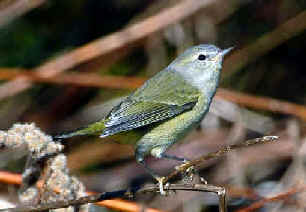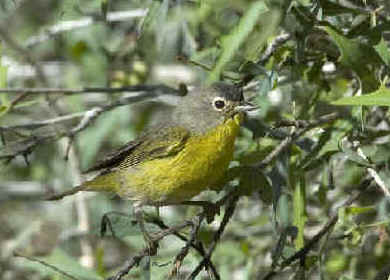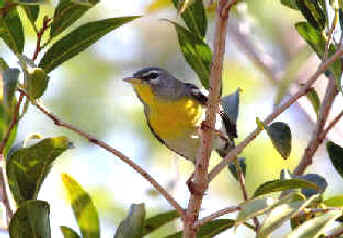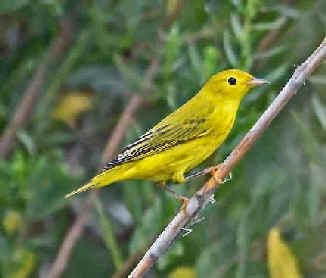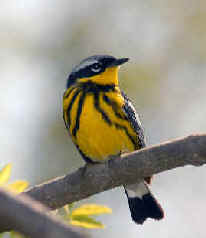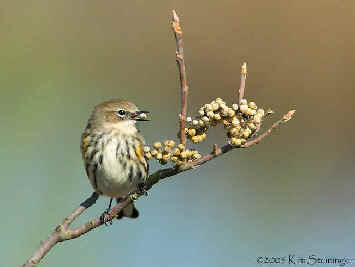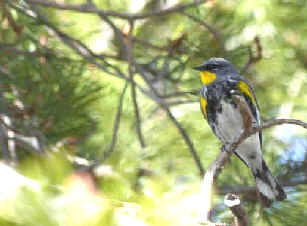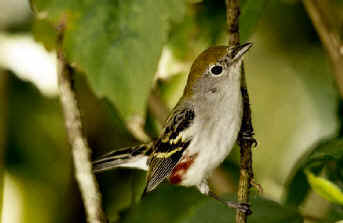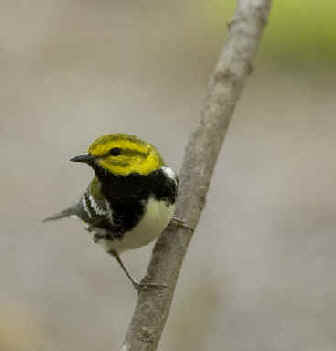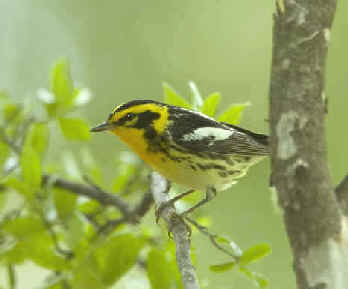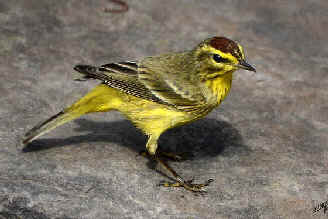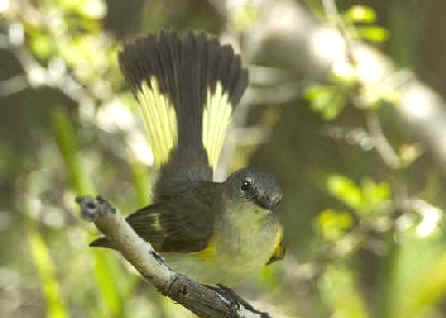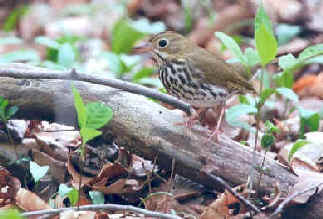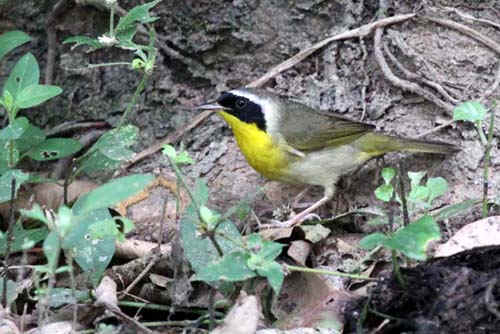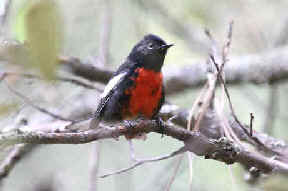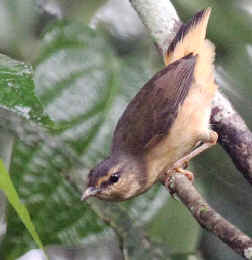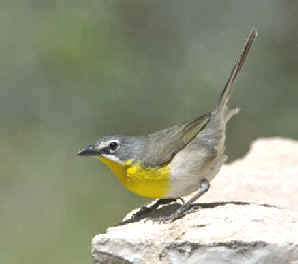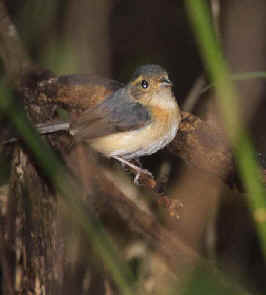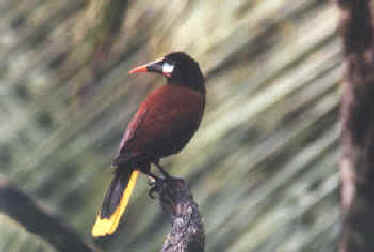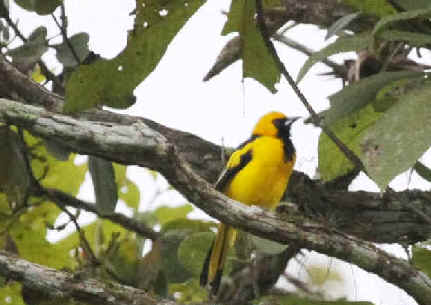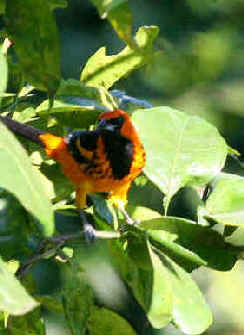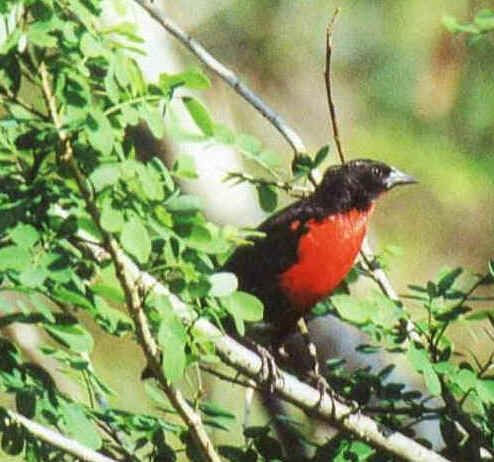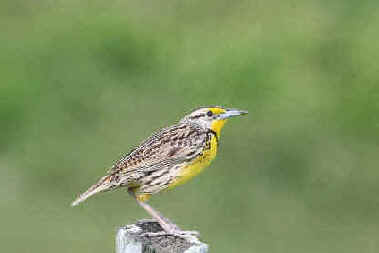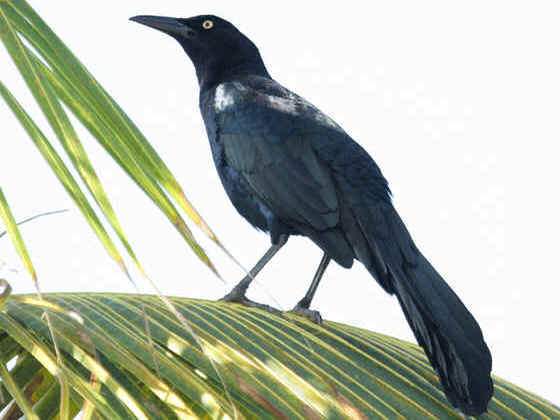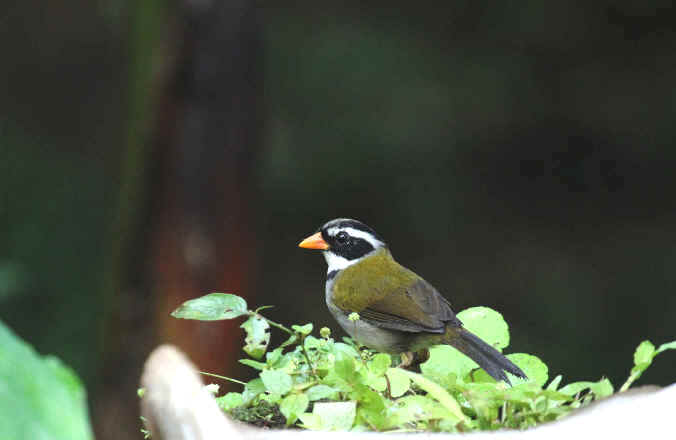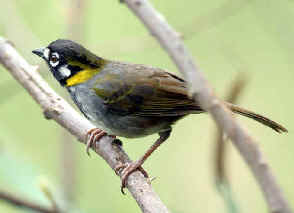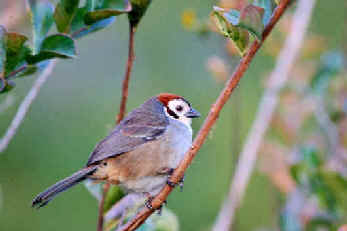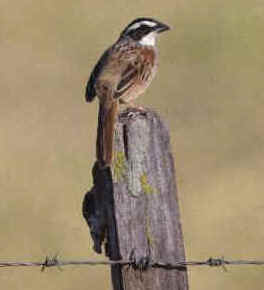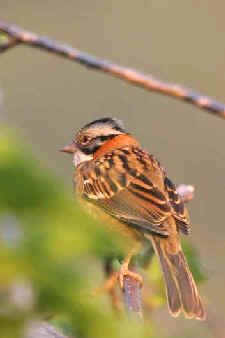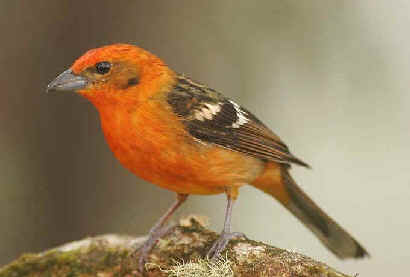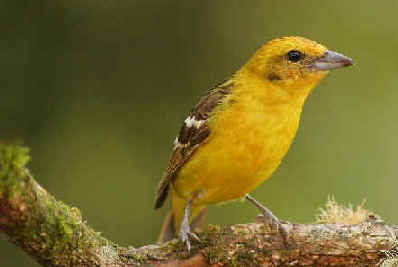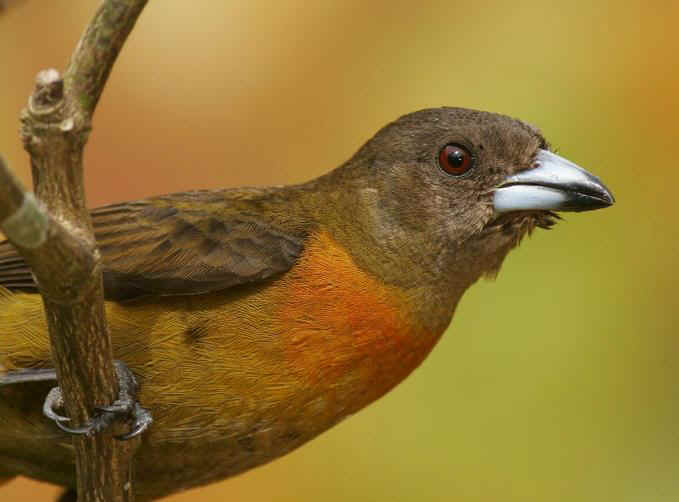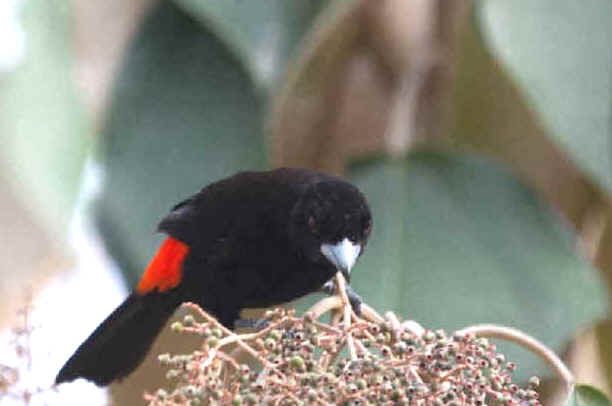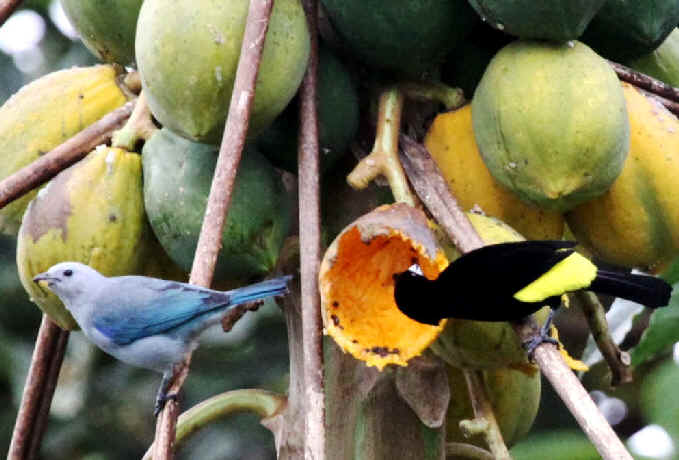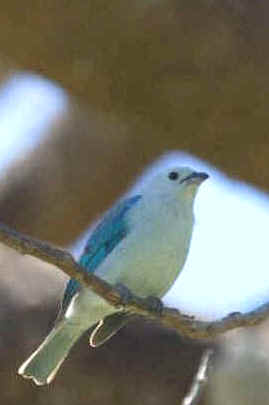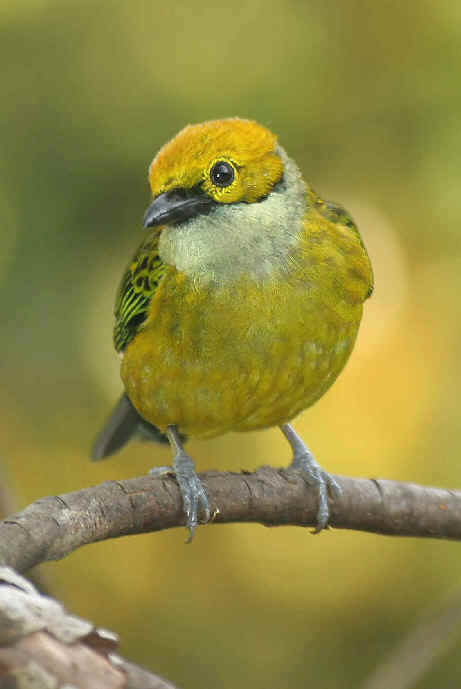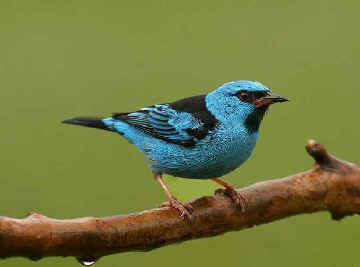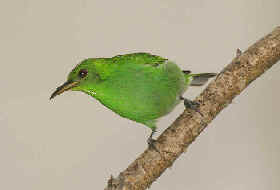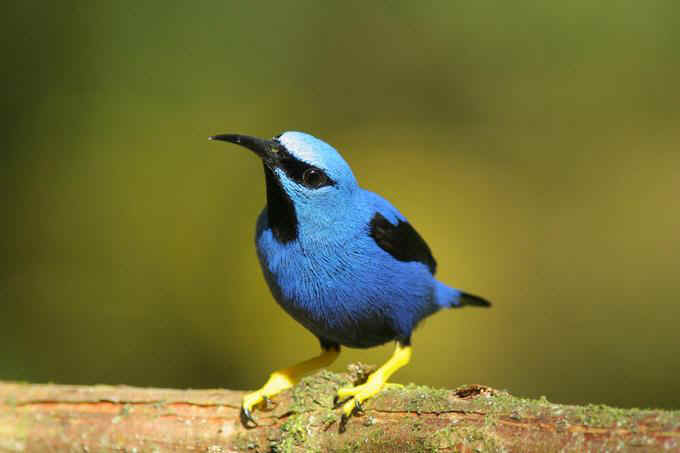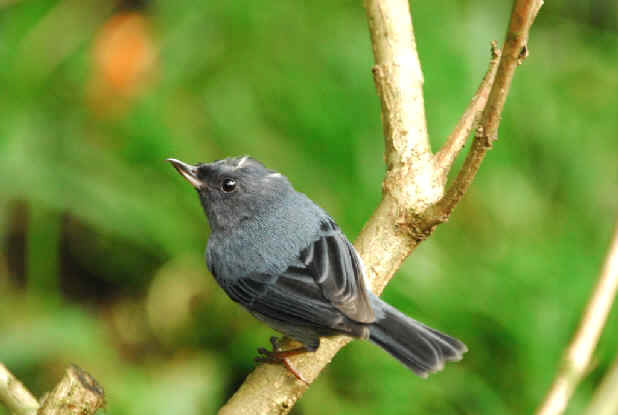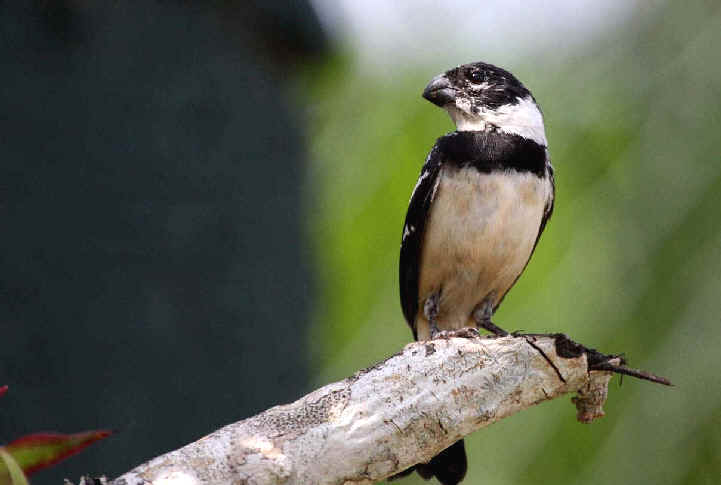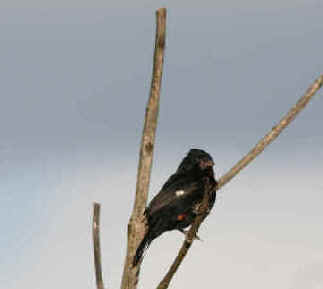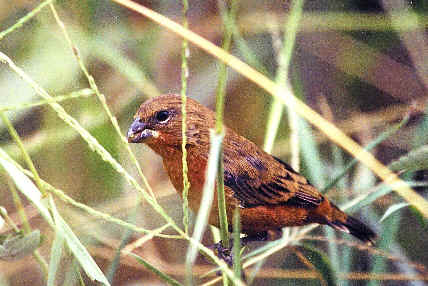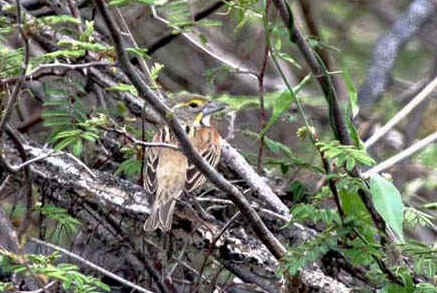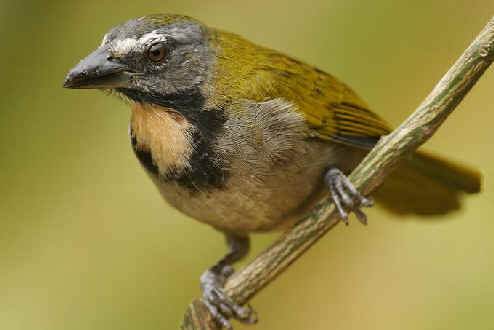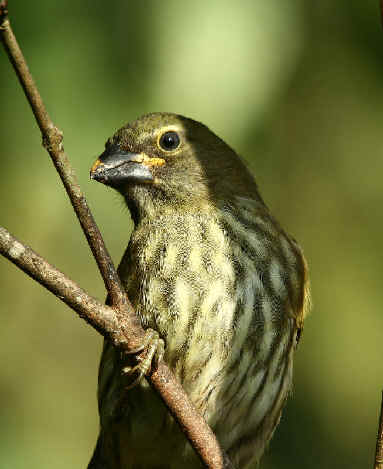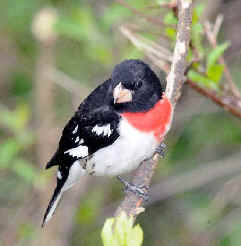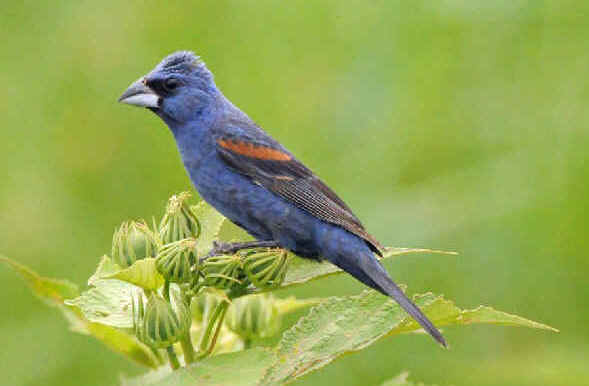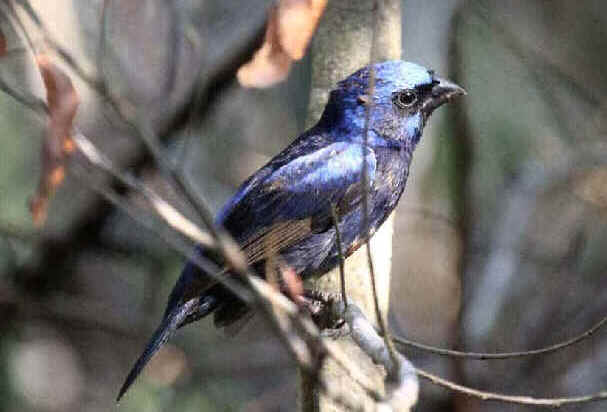 CENTRAL
AMERICA
CENTRAL
AMERICA
BIRDS
Thrushes to Buntings
Noting those found during
Focus On Nature Tours
with an (*).
1991 thru 2015
during the months
of January,
February, March, April, July, December
Part 4 of a Central America Bird List with some Photos,
compiled by Armas Hill
Photo at upper right: OLIVE-BACKED EUPHONIA
Codes:
(t): a globally threatened or
rare species, designated by Birdlife International
(t1): critical
(t2): endangered
(t3): vulnerable
(nt): a near-threatened species
globally
In the list that follows, relating to sightings during
FONT tours, the country & the months are noted.
BZ: Belize
CR: Costa Rica
GU: Guatemala
HN: Honduras
PN: Panama
(CAi): introduced species
(ph): species with a photo in the FONT web-site
Links to
Bird Groupings in this part of this list:
Thrushes
Dipper Pipit
Olive Warbler Euphonias & Chlorophonias
Goldfinch, Siskins, Grosbeak, Crossbill
New World
Warblers Wrenthrushes & Chats
New World Orioles, Blackbirds, & Allies
Bananaquit New World Sparrows & Allies
Tanagers & Allies
Conebill &
Flower-piercers Grassquits, Seedeaters, & Finches
Dickcissel,
Saltators, Grosbeaks, & Allies
Links to Other Parts of this Central American Bird List:
Part
#1: Tinamous to Doves Part
#2: Macaws to Woodpeckers Part
#3: Manakins to Thrashers
Links
to Lists of Birds in: Belize
Costa Rica
Guatemala
Honduras
Panama
Links to Lists & Photo Galleries of Other Nature, including
Central American:
Mammals
Butterflies
Amphibians, Reptiles
Marine Life, inc. Fish, Crustaceans
Links to Information about Upcoming FONT Birding
& Nature Tours:
in Central America
by
month, in:
2015
2016
or:
by geographic location
Other Links:
FONT Past Tour Highlights
Directory of Photos in this Website

Birds:
THRUSHES:
- Brown-backed Solitaire (*)
______ GU:jan,feb,mar,apr,jun,jul,dec
PN:feb,mar
Myadestes occidentalis oberholseri
- Slate-colored Solitaire (*)
______ GU:jan,feb,apr,jun HN:feb
Myadestes u. unicolor
- Black-faced Solitaire (*) ______ CR:feb,mar,apr,jul,dec/jan
(total range limited to
Costa Rica & western Panama)
Myadestes melanops (monotypic)
- Black-billed
Nightingale-Thrush (*) ______ CR:jan,feb,mar,jul (total range limited to Costa Rica
& western Panama)
Catharus g. gracilirostris
- Spotted Nightingale-Thrush
(*) ______ GU:apr,jul HN:feb
Catharus d, dryas
- Orange-billed
Nightingale-Thrush (*) ______ CR:feb,mar,jul,dec/jan GU:mar,apr,jun.dec
HN:dec PN:mar
Catharus aurantiirostris
Catharus aurantiirostris costaricensis (subspecies in most of Costa Rica)
Catharus aurantiirostris russatus (subspecies in southwest Costa Rica)
- Slaty-backed
Nightingale-Thrush (*) ______ CR:apr,dec'jan PN:mar
Catharus fuscater hellmayri
- Ruddy-capped
Nightingale-Thrush (*) ______ CR:feb,mar,apr,jul GU:apr,jun,jul,dec
PN:feb
Catharus f. frantzii
- Black-headed
Nightingale-Thrush (*) ______ CR:mar GU:apr
Catharus mexicanus carrikeri
- Gray-cheeked Thrush (*) ______ CR:apr GU:apr
Catharus minimus (2 subspecies migrate south from,
and north to North America)
- Swainson's Thrush (*) ______ BZ:apr CR:mar,apr,dec/jan GU:jan,feb,apr,dec
PN:mar,oct
Catharus ustulatus
(4 of 6 subspecies migrate as far south as
Costa Rica)
- Veery (*) ______ CR:apr
Catharus fuscescens
(4 subspecies migrate south from, and north
to North
America)
- Wood Thrush (*) ______ BZ:mar CR:mar,dec/jan
GU:jan,feb,mar,apr,dec HN:feb,apr,dec
Hylocichla
(formerly Catharus) mustelinus (monotypic, and the
single member of its genus)
- Rufous-collared Thrush (*)
______ GU:feb,mar,apr,jun,dec
Turdus rufitorques
- Black Thrush (*) ______
GU:feb,mar,apr,jun,dec
Turdus infuscatus
- Sooty Thrush (*) (ph) ______ CR:jan,feb,mar,jul,dec
PN:feb (total range limited to Costa Rica & western Panama)
Turdus nigrescens (monotypic)
The Sooty Thrush has been called the Sooty Robin.
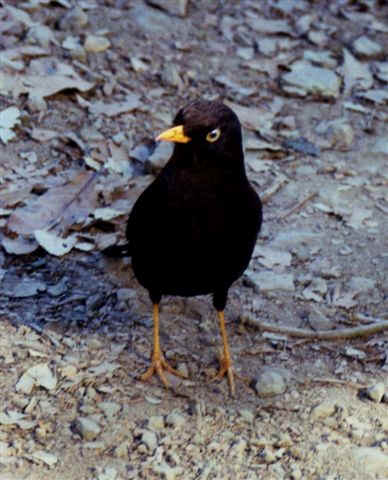
A Sooty Thrush photographed
during a FONT tour in Costa Rica
(photo by Marie Gardner)
- Mountain Thrush (*) _______ CR:feb,mar,apr,jul,dec/jan
GU:jan,feb,mar,apr,jun,dec PN:feb,mar
Turdus p. plebejus
The Mountain Thrush has been
called the Mountain Robin.
- Pale-vented Thrush (*) ______ CR:mar,apr PN:feb
Turdus o. obsoletus
The Pale-vented Thrush has been
called the Pale-vented Robin, and has been said, at various times,
to be conspecific with the Cocoa Thrush and Hauxwell's Thrush,
both of South America.
- Clay-colored Thrush (*) ______ BZ:feb,mar,apr
CR:jan,feb,mar,apr,jul,dec GU:jan,feb,mar,apr,jun,jul,dec
HN:feb,mar,apr,dec PN:jan,feb,mar,jul,aug,oct,nov
Turdus grayi casius
The Clay-colored Thrush has
been called the Clay-colored Robin. It is
the national bird of Costa Rica.
- White-throated Thrush (*) ______ CR:feb,mar,jul,dec/jan
GU:mar,apr,jun,jul,dec PN:mar
Turdus assimilis cnephosus
The White-throated Thrush has
been called the White-throated Robin. It is closely related to, and
has previously been conspecific with the White-necked Thrush of
South America.
- Eastern Bluebird (*) (ph) ______ GU:jan,feb,mar,apr,jun,dec
Sialia sialis guatemalae
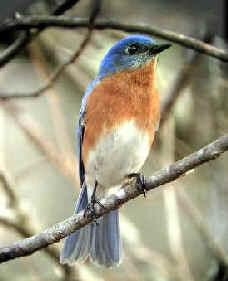
Eastern Bluebird
(photo by Howard Eskin)
DIPPER
- American Dipper (*) ______ CR:mar,dec/jan
Cinclus mexicanus ardesiacus
OLD WORLD SPARROW and
MUNIA


 CENTRAL
AMERICA
CENTRAL
AMERICA


